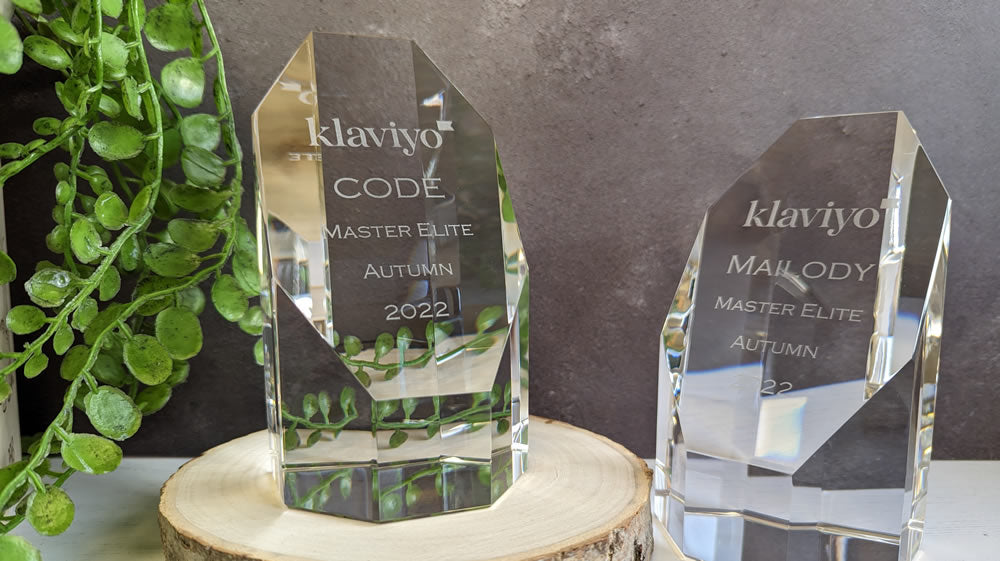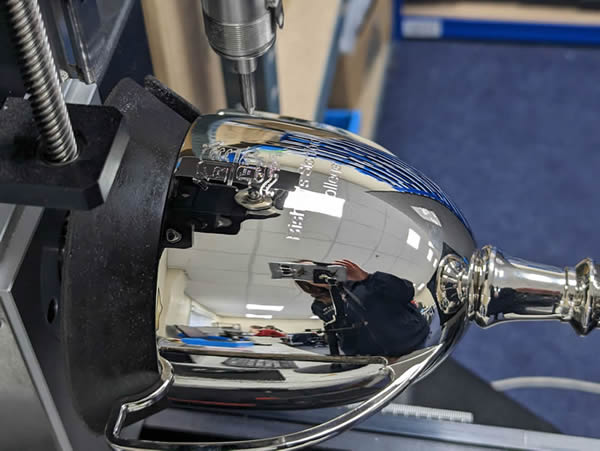Laser Engraving vs Diamond Drag Engraving: Which is Right for Your Trophies?

Welcome to our guide to Laser Engraving and Diamond Drag Engraving. At North East Trophies, we offer a high-quality engraving service using both methods so we understand the differences between the methods and the best times to use them.
In this article, we'll explore the differences between laser engraving and diamond drag engraving, and help you determine which option is right for your trophy needs. We'll also discuss different finishes of each method, engraving accuracy, and what not to laser engrave.
So, let's get started and dive into the world of trophy engraving.
Laser Engraving vs Diamond Drag Engraving
Laser engraving and diamond drag engraving are two popular methods of engraving trophies and awards.
Laser engraving involves using a laser to remove the surface material of the trophy. The laser beam is directed at the surface of the trophy, which causes the material to vaporize and create a finish that resembles an engraved mark; it works well when the material underneath is a different colour to emphasise the engraved finish. Laser engraving is extremely precise, and allows for intricate designs to be created quickly and accurately.
Diamond drag engraving, also known as diamond etching, uses a diamond-tipped tool to scratch the surface of the trophy. The tool is guided by a computer, which allows for precise control of the design. Diamond drag engraving produces a traditional, handcrafted look that is often preferred for certain types of trophies.
Each method has its advantages and disadvantages. Here are some of the key differences:
Advantages of laser engraving:
- High precision
- Ability to create intricate designs with very detailed images (perfect for logo engraving)
- Fast and efficient
- Does not require physical contact with the trophy, reducing the risk of damage
- Easier to automate, as laser engravers are extremely programmable.
- Repeatable results
Disadvantages of laser engraving:
- Limited material options in the trophy world
- May not work well on certain materials (metals for example)
- Can be more expensive than diamond drag engraving
Advantages of diamond drag engraving:
- Traditional, handcrafted look
- Versatile – can work on a variety of materials
- Depth of engraving on metals is preferable with drag etching.
Disadvantages of diamond drag engraving:
- Slower than laser engraving
- Limited to simpler designs
- Requires physical contact with the trophy, which may cause damage if not done carefully
The choice between the two ultimately depends on the desired aesthetic, budget, and material of the trophy or award.
Keep in mind that "diamond etching" is another term used for diamond drag engraving, and you may see it used interchangeably throughout the industry.
When should we Use Laser Engraving?

Laser engraving is a popular option for glassware and crystal awards. Here are some situations where laser engraving may be the best option:
- When a high level of precision is required: Laser engraving allows for intricate designs to be created with great precision, making it an excellent choice for trophies with small or detailed designs.
- When the material of the trophy is compatible with laser engraving: Laser engraving works well on a variety of materials, such as acrylic, glass, and crystal. If your trophy is made from one of these materials, laser engraving may be the best option.
- We use laser engraving for our glass trophies and awards, when we are engraving a large area and we need to engrave company logos and club crests and lots of text. Laser engraving achieves this quickly and is visually stunning.
When should we Use Diamond Drag Engraving?

Diamond drag engraving, also known as drag etching, is a method that uses a diamond-tipped tool to create engravings on trophy cups, giftware, and jewellery. Diamond drag engraving may be the best option in situations where:
- a deeper engraving is desired: Diamond drag engraving produces deeper cuts than laser engraving, which can give the engraving a more pronounced look especially on metal items.
- the material of the trophy is not compatible with laser engraving: While laser engraving works well on a variety of materials, diamond drag engraving may be a better option for materials such as metal and stone.
- a more traditional look is desired: Diamond drag engraving can give a more traditional, handcrafted look to the engraving.
- We use drag engraving on all of our trophies with metal trophy plates. It is quick and easy and gives a clear finish on the trophy in keeping with traditional engraving methods.
What Materials Should You Not Laser Engrave?
While laser engraving is a versatile method for engraving and produces superb results on most substrates, it is important to note that certain materials should not be engraved with a laser due to potential hazards. These materials include:
- PVC: Engraving PVC with a laser can release harmful gases, such as chlorine gas, which can be dangerous to both the operator and the environment.
-
Leather that contains chromium (untreated leather is fine) - Chromium gas (Cr(VI)) is a highly toxic substance that poses numerous dangers to human health including respiratory problems (coughing, wheezing, shortness of breath, and asthma. Prolonged exposure can cause permanent damage to the lungs.), skin irritation, eye damage, and cancer.
-
Carbon Fibre – Carbon dust is associated with lung damage following prolonged exposure.
-
PVB Polyvinyl butyral – thermal breakdown can release irritating gases.
-
Beryllium Oxide – Beryllium is classified as a carcinogen and gases can irritate the nasal cavity, throat and lungs.
-
Teflon (PTFE) – overheating of PTFE can cause ‘polymer fume fever’ in anyone breathing in the gases. Polymer fume fever, as its name suggests, is a collection of all the classic signs of a fever, namely, chills, muscle pain, chest tightness, and commonly a fever. It has been reported frequently by factory workers and usually resolves within 24 hours.
-
Other Materials containing the Halogens chlorine, bromine, iodine, fluorine, astatine. These gases are dangerous, some especially so. Chlorine is highly toxic.
How Accurate is Laser Engraving?
One of the main advantages of laser engraving is its precision and accuracy. Laser engraving machines are capable of creating highly detailed and intricate designs with sharp, clean lines. We often get asked to engrave company logos, club badges, and even photographs into materials. However, the accuracy of laser engraving can be affected by a number of factors, including the type of material being engraved, the quality of the artwork or design, and the resolution of the laser. If you have a design or artwork that requires high precision engraving, laser engraving is usually the best option.
Will laser engraving wear off or is it permanent?
Laser engraving is a permanent method of marking an object. Unlike other surface-level marking techniques such as printing or painting, laser engraving etches 'into' the surface of the object, creating a deep and lasting mark. This means that laser engraving will not wear away, even with frequent use or exposure to the elements.
However, the durability of the engraving may depend on the material being engraved and the conditions in which the object is used. For example, an object made of a softer material may be more prone to scratches, which could affect the appearance of the engraving. In general, though, laser engraving is a reliable and long-lasting way to add custom designs or personalization to a wide range of objects.
The Million Dollar Question: Is Laser Engraving Better Than Drag Engraving?
When it comes to engraving trophies, awards and giftware, both laser engraving and diamond drag engraving have their advantages, and their use depends on what the specific job entails. Neither can be chosen over the other in every instance. They both have their place and we use both methods all day every day.
Laser Engraving:
- Allows for intricate designs with high precision
- Can engrave on a variety of materials, best results on wood, acrylic, glass and even leather.
- Fast and efficient process and is perfect for larger bulk jobs.
Diamond Drag Engraving:
- Produces deeper cuts than laser engraving
- Suitable for a variety of materials, including metals and stone and certain plastics.
- Provides a more traditional look
Ultimately, the choice between laser engraving and diamond drag engraving will depend on the specific needs of your project. At North East Trophies, as a local engraving company, we offer both laser engraving and diamond drag engraving for football trophies, glass awards and other giftware. Contact us to discuss your specific needs and to get a quote for your project.


Leave a comment